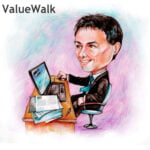Oaktree Capital Management chairman Howard Marks isn’t a big fan of the conventional treatment of volatility and risk as being one and the same. That’s not to say Oaktree doesn’t use Sharpe ratios and other statistical measures of risk in their business, they do, but volatility doesn’t really capture the quality that we are trying to avoid when we do risk management.
“I don’t think most investors fear volatility. In fact, I’ve never heard anyone say, ‘The prospective return isn’t high enough to warrant bearing all that volatility.’ What they fear is the possibility of permanent loss,” writes Howard Marks. “The probability of loss is no more measurable than the probability of rain. It can be modeled, and it can be estimated (and by experts pretty well), but it cannot be known.”
I have no interest in being a skydiver who’s successful 95% of the time: Howard Marks
In a follow up to his 2006 memo Risk, Howard Marks argues that investors need to get out of the habit of trying to figure out which possibility is the ‘right’ one and accept that in the present moment there are a number of possible futures and risk management takes all of them into account. On the most basic level this means looking at the future as the weighted average of possible outcomes and acting in the way that maximizes returns. But it also means identifying when the risks of a particular outcome are so severe that it has to be avoided at all cost.
“I have no interest in being a skydiver who’s successful 95% of the time,” says Howard Marks.
Howard Marks identifies more than 20 different types of memo in his essay, some of them conflicting, and points out that a single investment strategy may have multiple sources of risk that can interact in unexpected ways.
Oaktree’s Ten Percent Solution
As an example, Howard Marks talks about Oaktree’s Ten Percent Solution, a set of fixed income strategies that aim for 10% returns in a low yield world. The first, enhanced income, uses leverage to magnify the returns on Oaktree’s portfolio of senior loans, and even though the loans themselves are probably quite safe, the results become more extreme in both directions as the leverage gets ratcheted up.
The other four strategies (strategic credit, mezzanine finance, European private debt, and real estate debt) don’t have much leverage risk to speak of but carry a great deal of credit risk instead. If borrowers default than the assets don’t perform. As competitive, niche markets they also carry illiquidity and concentration risk, and since investors are reliant on managers to make good decisions about which debt to buy they have manager risk as well.
This approach rests on Oaktree’s belief that the market is too averse to credit risk right now (pushing risk/reward in its favor), and that credit risk is manageable. Howard Marks doesn’t think that his team of managers has the secret that will allow it to predict the future, but rather the experience to prepare for the wide variety of futures that may come about.











